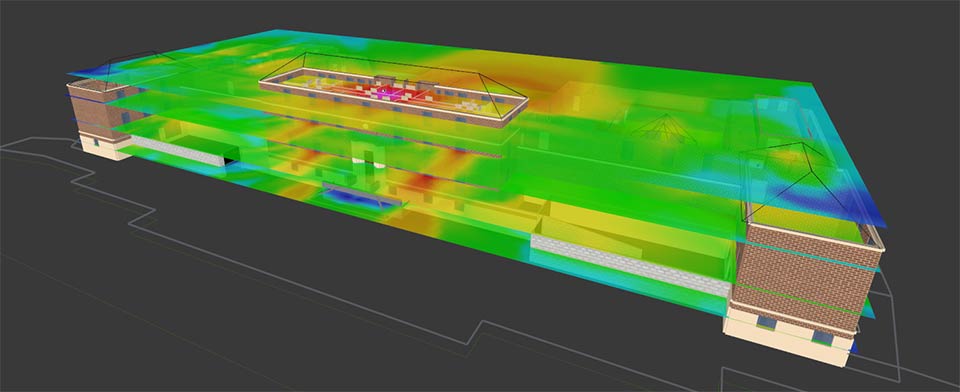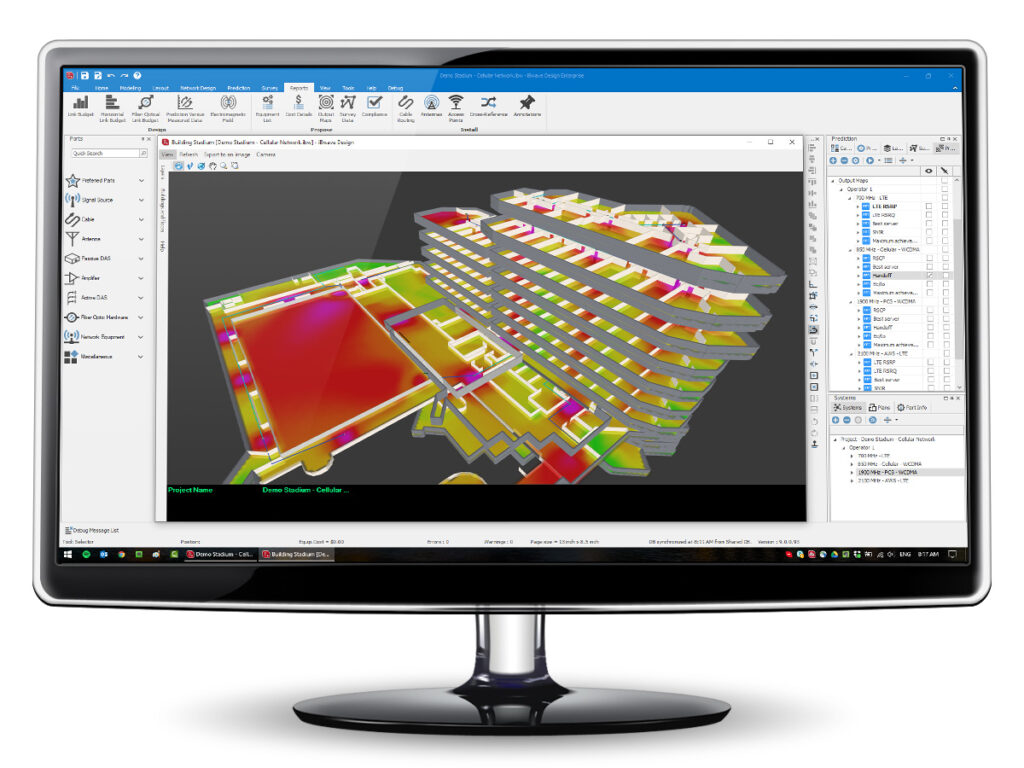Case Study: MarQuest relies on iBwave accuracy to design Zigbee IoT network
Read how MarQuest, a high-performance wireless design firm, was able to successfully implement a Zigbee IoT lighting solution for the science laboratory building of a large UK university.
ABOUT MARQUEST

MarQuest designs and builds high-performance wireless network infrastructure systems including Wi‑Fi, network visibility and packet-level forensic systems.
The company has established itself as a leading entity in the Wi‑Fi arena and is regularly commissioned by large enterprises and public-sector bodies. MarQuest engineers have a high level of expertise in both RF technologies and IT systems.
In line with its objective to be at the forefront of technological developments in IT networking, MarQuest has recently become more active in the field of IoT deployment, particularly with regard to optimizing deployments at an RF level and for multiple RF technologies co-existence strategies.
INTRODUCTION
When MarQuest was offered the opportunity to design a first-of-its kind Zigbee IoT lighting solution for the science laboratory building of a large UK university, they agreed to put their extensive Wi‑Fi design experience to the task.
THE CHALLENGES
With floor plans for the building in hand, the MarQuest team looked at how their Wi‑Fi design expertise could be applied to the university’s IoT lighting requirements. MarQuest started with the IEEE Standard for low-rate wireless networks, and the knowledge that each fixture would have a Thread wireless communication module in it.
The MarQuest technical team determined which channels would work best to operate nicely with Wi‑Fi, but needed to learn more about wireless lighting. The team had many unanswered questions about sensitivity, signal strength, how many hops they could have in a mesh, how far could they place a border router to connect, and how many border routers were needed.
Finding an accurate design solution
After some quick initial research, the MarQuest team discovered that few solutions were available for designing IoT networks, compared to Wi‑Fi tools. MarQuest determined that they could try two methods for modeling. First, they used development adaptors and a Wi‑Fi design tool, and calibrated 802.15.4 to 802.11. But, when the team tested their calibration model on site, the calibration method wasn’t accurate, and the network didn’t work as needed.
The MarQuest team’s second option was to model the building and do a predictive design using iBwave that supports ZigBee. They were pleased to see that the site test results aligned with what they modeled using iBwave Design. The iBwave solution was by far the most accurate platform, so MarQuest decided to use it as the basis for the entire design.
THE SOLUTION
The solution used for this project was iBwave Design, our wireless network design software that can be used to design any type of wireless network including Zigbee IoT networks.
iBwave Wi‑Fi can also be used to design IoT networks with the same accuracy and efficiency as our flagship iBwave Design.
THE RESULTS
By using iBwave software to model the design, the MarQuest team was able to include the fade margin into the design to determine the coverage boundary. With iBwave’s 3D visualization of the network’s heatmaps, the team accurately simulated how the lighting devices would behave throughout the science laboratory building.
They still needed to answer the question of how often they needed to use border routers to ensure sufficient coverage. Lights can mesh together, but more than 2 hops could start to break. iBwave’s 3D modelling, ability to consider reflection and diffraction, and advanced prediction algorithms allowed the team to develop a full design with border routers located where they were needed.
iBwave predictive models for Zigbee provide high accuracy needed
When the network was installed, it worked as predicted by the iBwave models. The success of the implementation showed that the MarQuest team can apply its Wi‑Fi design expertise to IoT applications. The team also saw that even Thread devices such as lights can be modeled with an extremely high degree of accuracy with the Zigbee predictive models in the iBwave solution.


To learn more about how iBwave Design can help design networks for a variety of use-cases, visit our product page on www.ibwave.com.

